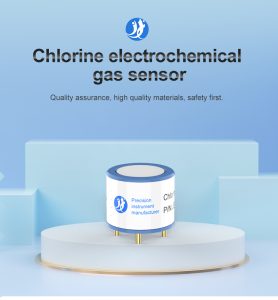Environmental monitoring plays a crucial role in understanding and managing our natural surroundings. It provides vital information about the quality of air, water, and soil, helping us identify pollution sources, assess ecological health, and implement appropriate mitigation strategies. Gas sensors have emerged as powerful tools in environmental monitoring, enabling real-time and accurate detection of various gases and pollutants. In this article, we will explore the potential of gas sensors in advancing environmental monitoring and their significance in protecting our planet.
- Gas Sensors: The Building Blocks of Environmental Monitoring:
Gas sensors are electronic devices designed to detect and measure the concentration of specific gases or volatile organic compounds (VOCs) in the environment. These sensors work on the principle of detecting changes in electrical conductivity, optical properties, or chemical reactions when exposed to target gases. They offer high sensitivity and selectivity, making them ideal for detecting even trace amounts of pollutants.
- Monitoring Air Quality:
Air pollution is a global environmental challenge with detrimental effects on human health and ecosystems. Gas sensors play a critical role in monitoring air quality by detecting and quantifying pollutants such as carbon monoxide (CO), nitrogen dioxide (NO2), ozone (O3), sulfur dioxide (SO2), and particulate matter (PM). With the ability to provide real-time data on pollutant concentrations, gas sensors help authorities assess air quality, identify pollution hotspots, and take prompt actions to mitigate the impacts.
- Ensuring Water Safety:
Safe drinking water is essential for human well-being, and gas sensors contribute significantly to ensuring its quality. These sensors can detect harmful substances like chlorine, ammonia, heavy metals, and pesticides in water bodies. By continuously monitoring water sources, gas sensors enable early detection of contamination events and facilitate timely intervention to address the issue. This early warning system protects public health and helps safeguard aquatic ecosystems.
- Soil Health Assessment:
Healthy soils are vital for agriculture, biodiversity, and ecosystem stability. Gas sensors equipped with appropriate probes can monitor soil parameters such as moisture content, pH, and nutrient levels. These sensors can also detect harmful gases emitted by contaminated soils, including volatile organic compounds (VOCs), methane, and hydrogen sulfide. By providing real-time data on soil conditions, gas sensors empower farmers and land managers to make informed decisions about crop selection, irrigation, and soil remediation measures.
- Industrial Emissions Monitoring:
Industrial activities are a significant source of air and water pollution. Gas sensors play a crucial role in monitoring emissions from factories, power plants, and other industrial facilities. By detecting gases such as sulfur dioxide (SO2), nitrogen oxides (NOx), and volatile organic compounds (VOCs), these sensors help industries identify areas of improvement in their processes and ensure compliance with environmental regulations. Real-time monitoring enables early identification of malfunctioning equipment or leakages, allowing for timely repairs and preventing further pollution.
- Disaster Management:
Gas sensors have proven invaluable in disaster management and emergency response situations. For instance, during natural disasters like forest fires or chemical accidents, gas sensors can detect hazardous gases and provide crucial information for evacuation and containment efforts. By continuously monitoring the environment during and after emergencies, gas sensors help authorities assess the extent of pollution and take prompt actions to protect both human and environmental health.
- Remote Sensing and IoT Integration:

Advancements in gas sensor technology now allow for remote sensing applications. Gas sensors can be integrated into unmanned aerial vehicles (UAVs) or satellite systems, enabling monitoring of large-scale areas, such as forests or oceans. This integration with the Internet of Things (IoT) enhances data collection, analysis, and visualization, leading to more effective decision-making in environmental monitoring. Furthermore, the integration of gas sensors with IoT platforms facilitates seamless data sharing among stakeholders, such as researchers, policymakers, and environmental organizations.
- Citizen Science and Public Engagement:
Gas sensors have also empowered citizens to actively participate in environmental monitoring through citizen science initiatives. With the availability of affordable and portable gas sensors, individuals can monitor the quality of their surroundings and contribute data to collective databases for analysis. This citizen engagement enhances public awareness, fosters a sense of responsibility toward the environment, and encourages collaborative efforts in addressing environmental challenges.
Conclusion:
Gas sensors have revolutionized environmental monitoring by providing real-time and accurate data on various gases and pollutants. From monitoring air quality and ensuring water safety to assessing soil health and managing industrial emissions, gas sensors have a wide range of applications in safeguarding our environment. By unleashing their potential and integrating them with advanced technologies like remote sensing and IoT, we can enhance our understanding of the environment and take proactive measures to protect it. The continued development of gas sensor technology holds great promise for a sustainable future, where we can effectively monitor and manage our environment for the well-being of both present and future generations.
 : +86 155 8830 2704
: +86 155 8830 2704 : jxdziot@gmail.com
: jxdziot@gmail.com
